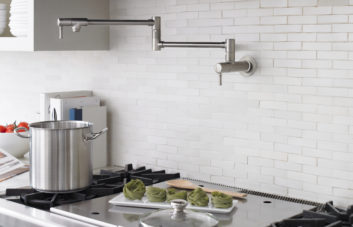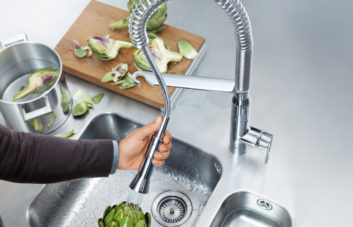The wonderful world of kitchen faucets can be dizzying, a rough terrain where unfamiliar terms abound. Two of those terms that are frequently used interchangeably are “pull-out” and “pull-down” – though many do not distinguish between the two, there are indeed differences.
This is a pull-out faucet:
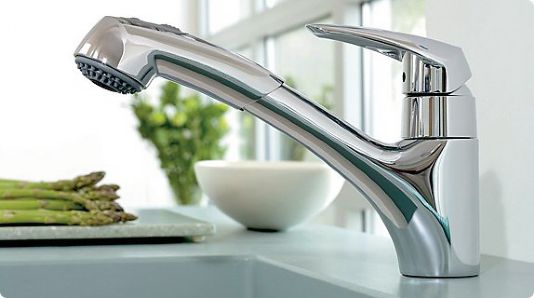
And this is a pull-down faucet:
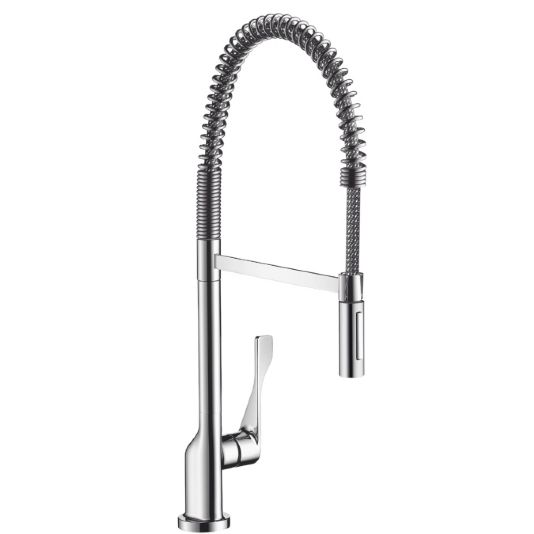
Each faucet type has its pros and cons.
A pull-out faucet generally has a longer hose than a pull-down, which enables it to reach further (i.e. to fill pots on the counter, especially handy if you have a shallow sink). Pull-outs tend to extend straight out (as opposed to high-arc faucets), which means that they fit better in smaller sink areas and minimize splashing.
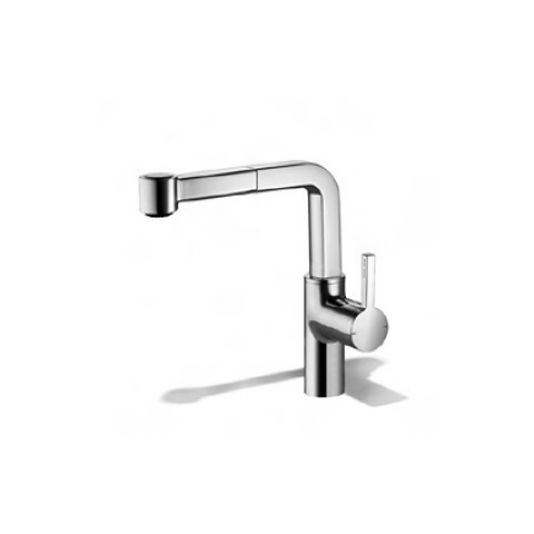
If you have low over-sink cabinets, a pull-out’s lower profile is probably the better choice for you.
On the negative side, a pull-out faucet’s straight design makes them less than ideal for filling taller pots, especially in smaller sinks.
Pull-down faucets are typically high-arc style with a pull-down spray head at the end. They’re excellent for filling tall pots, vases, and pitchers and are considered ergonomically correct due to the one fluid motion required to use it (pulling straight down as opposed to pulling and maneuvering a pull-out faucet).
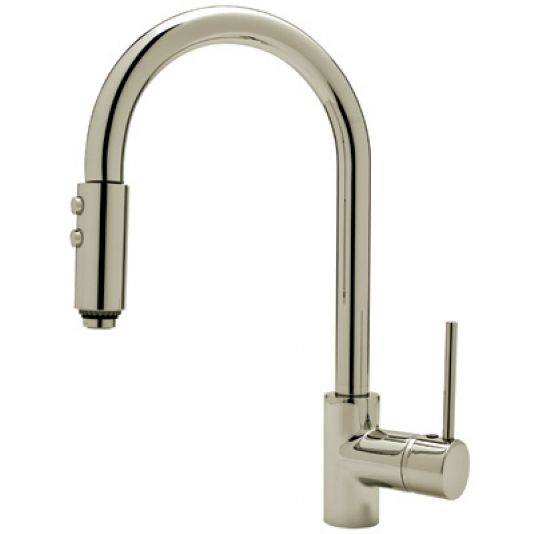
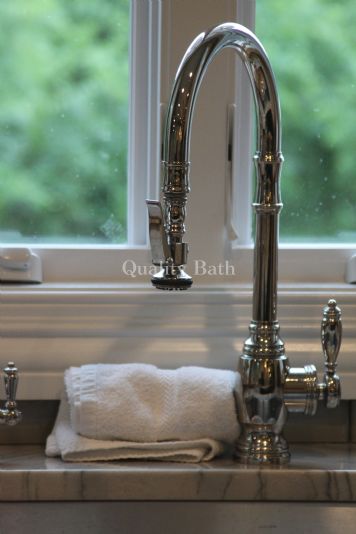
The downside of pull-downs is that although gravity works with you when pulling it down, it often works against the faucet, resulting in dangling heads when the weighted and magnetic mechanisms on cheaper models fail. Make sure to splurge on a higher-quality model!
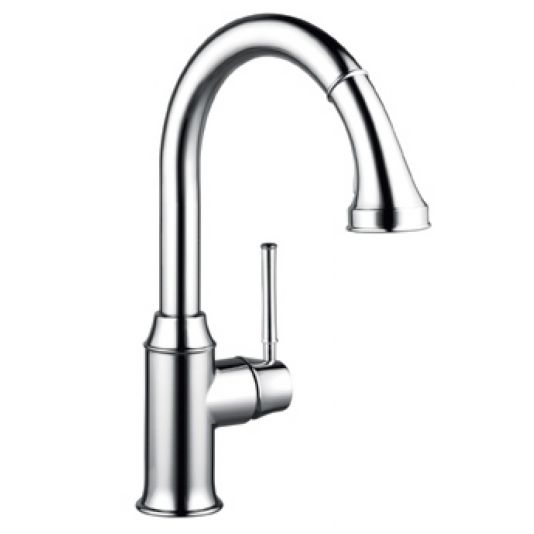
Pull-downs are not recommended in kitchens with low water pressure, as the water must travel further through the taller spout.
And that’s the difference! There’s one more kitchen mystery cleared up for you.
Do you have a pull-down or pull-out? What’s your experience with it?

